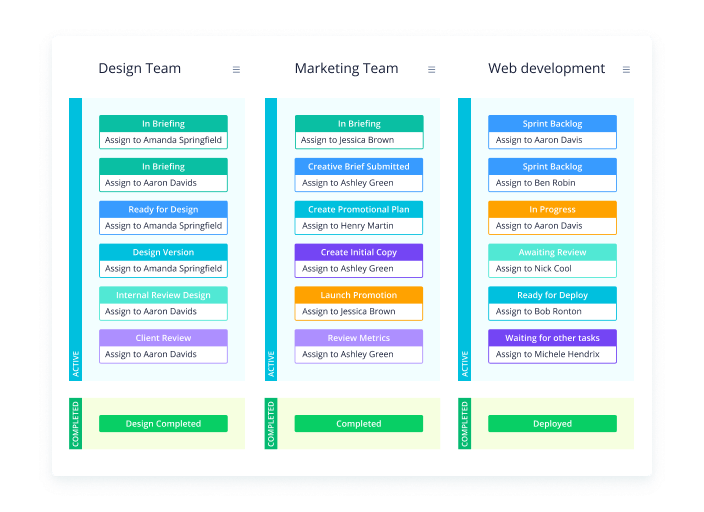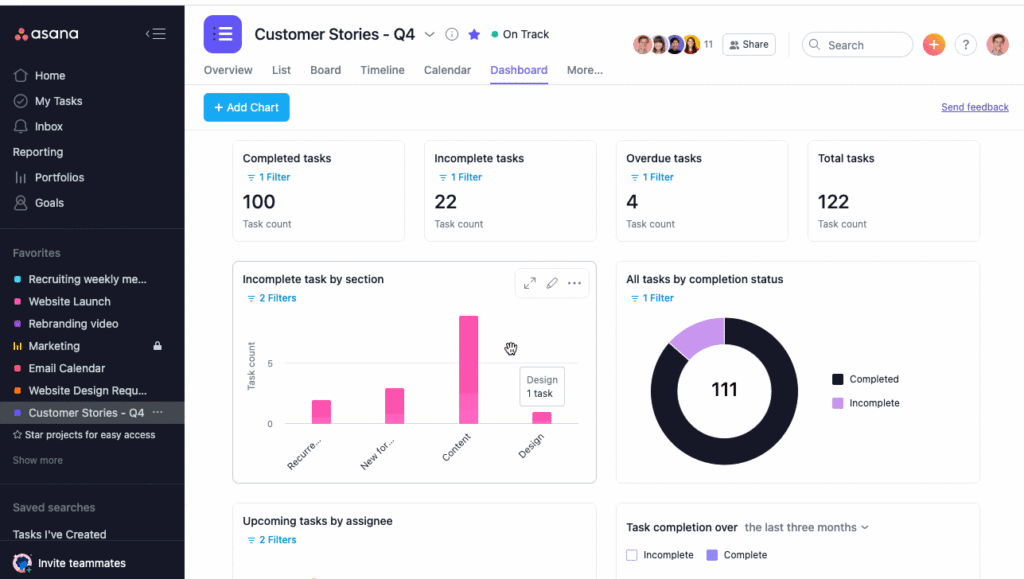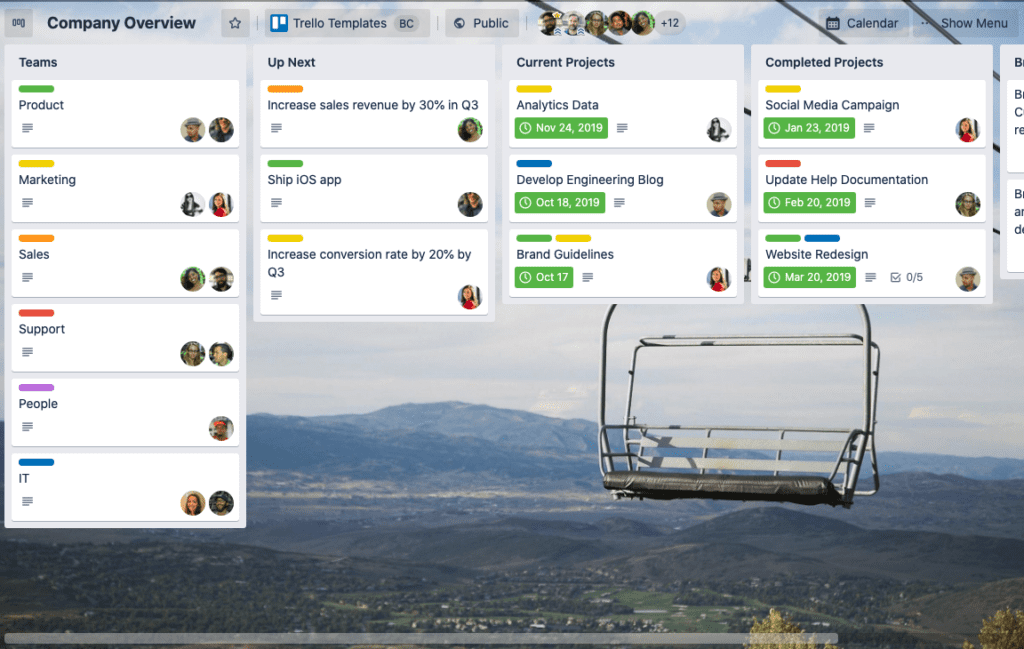What is Kanban and how can it assist your development team in completing complex projects? We will answer those questions and reveal several Kanban tools that can help project managers and developers make the most of this time and money-saving method.
What is Kanban?
Kanban is a framework that comes from the Agile methodology. Kanban stresses transparency and collaboration, and it uses Kanban boards to visually represent work in its different stages (typically Requested, In Progress, and Done) so that managers and team members can see where tasks and projects stand.
Staying true to its name, this method comes from the Japanese word “Kanban,” which means “signboard” or “visual board.” Taiichi Ohno, a Japanese engineer, is credited with developing the framework in the 1940s to boost Toyota’s manufacturing efficiency.
While Kanban got its start in the auto industry, the software industry adopted the method at the beginning of the 21st century as a way to improve the delivery of products and services.
Reading: Project management methodologies
What are Kanban’s Core Practices?
To achieve the improvement mentioned above, software development teams should follow Kanban’s six core practices, which we highlight below.
Visualize Workflow and Kanban
Work visualization in Kanban comes via boards that are filled with columns and cards. These boards serve to help project managers and team members see the state of the workflow, along with any specifications and risks. Each column represents a workflow step or stage, such as Requested, In Progress, or Done. Each card, meanwhile, represents a work item.
When work begins on an item, it should be moved from the Requested column to the In Progress column. Once complete, it should be moved to the Done column. While simple, such a setup makes it easy to track progress and pinpoint any possible bottlenecks that could negatively impact a team’s efficiency or ability to meet deadlines or software deliverables.
Limit WIP
WIP stands for work in progress. Kanban aims to minimize WIP by ensuring that software development teams have a manageable workload. In doing so, they can avoid overwhelm and ensure product quality. Without limits on WIP, Kanban cannot be successfully implemented. Too much multitasking will overload workers, lead to inefficiency and waste, and damage the entire process.
There should be a maximum number of items per stage to limit WIP. Cards should only be pulled to the next stage when there is room to do so.
Manage Flow with Kanban
Kanban avoids micromanagement. It believes in managing work versus people. Instead of trying to keep team members busy, the focus should be on moving work through production at a pace that is swift yet sustainable.
Ensure Process Policies Are Clear
For a project to run smoothly, all team members must be clear on the common goal, which is why your process policies must be explicitly defined, shared, and, if necessary, explained, so everyone is on the same page.
Implement feedback loops
Kanban uses feedback loops or cadences to help software development organizations increase transparency and respond to potential changes. For example, teams could hold daily Kanban meetings to share what was accomplished yesterday and what will be finished today. With these meetings, the potential for increasing output can be identified.
Implement Changes Collaboratively
For organizations to improve and create sustainable change, they must collaboratively implement changes that are based on metrics, methods, and feedback that are scientifically proven.
Reading: How to Become a Project Manager
What are the Benefits of Kanban for Developers?
Why use the Kanban method? Because it can help your development team in the following ways:
Improved Visibility
Thanks to the Kanban board, everyone on your team can see a project’s overall status. They can see what needs to be done, what is being worked on, and what has been accomplished. Through this, they can also spot any bottlenecks as they form to address issues before they get out of hand. This visibility includes an overview of important tasks, such as feature updates, patches, bug fixes, and documentation.
Increased efficiency
Good software development practices involve code efficiency and developer efficiency. The improved visibility Kanban provides can also increase efficiency, letting project managers for software development teams do more with what they already have. As mentioned, Kanban’s visual nature makes it easy to spot bottlenecks and other issues (like excessive work in progress) that can negatively impact a team’s efficiency. Once those problems are spotted, you can address them to ensure your process runs like a fine-tuned machine.
improved productivity
The more efficient your development team becomes, the more productive they can be and the more code they can write. Kanban uses key productivity metrics, like cycle time (how long tasks take to pass through your process) and throughput (how many tasks are completed per period) to help teams see how their production has improved.
Less Waste
Any actions that use resources without adding value are wasteful. With Kanban, wasteful actions are minimized by reducing idle tasks that require time or effort. For a software development team, this could include refactoring code before the project is at the proper point or over documenting code that is self-explanatory.
More focus and less burden
By putting limits on WIP, Kanban reduces multitasking so team members can concentrate on a single task at a time. Those same WIP limits also prevent team members from feeling overwhelmed or being overburdened with work they cannot finish.
Better Collaboration
Kanban promotes frequent collaboration via daily standup meetings, strategic reviews, etc., where team members exchange ideas and concerns while also receiving feedback from stakeholders.
Increased predictability
WIP limits add stability and let managers easily predict when projects will be finished. When they are asked the common question of when a product will be ready, they will be able to answer with certainty.
Ideal company culture
What do you get when you combine improved visibility and transparency, better collaboration and feedback, less micromanaging, and team members who do not have to be worried about being overburdened? You get an ideal company culture, which is what Kanban can provide.
Reading: Top 5 Project Management Certifications
Kanban tools for developers
By now, you hopefully have a better idea of how Kanban works and the benefits it can provide. Here are some of the top Kanban tools for developers on the market that can help you implement the method for your development team.
Monday.com Kanban and Project Management
This project management software offers a basic Kanban board with customizable columns and rows. While not too advanced in terms of its Kanban options, Monday.com offers other features like timesheet tracking, automatic notifications, comments, multiple views, file attachments, and more.
You can learn more about Monday.com and its Kanban features by reading Monday.com Project Management Tool Review.
Jira and Kanban project management software
Jira is one of the top tools for issue tracking and project management. You can use its Kanban boards to track progress and control your workflow with ease. Jira is highly customizable and offers solid collaboration and reporting features for those seeking something beyond just Kanban boards.

You can learn more about Jira and its Kanban features by reading Jira Review: Features and Pricing.
Zoho Projects
Another Kanban tool worth looking into is Zoho Projects. While not too customizable, it suffices for Kanban use to help team members see a project’s current progress and what needs to be done.
![]()
You can learn more about Zoho Projects and its Kanban features by reading our Zoho Projects Review.
wrike
Wrike is another project management and collaboration tool that offers Kanban functionality. Use its out-of-the-box Kanban board to visualize tasks and progress, or customize it to your liking by adding columns and implementing WIP limits. In terms of user friendliness, Wrike is one of the best PM software offerings, which is excellent if you are looking for a Kanban tool with a minimal learning curve.

You can learn more about Wrike and its project management features by reading: Wrike Project Management Software Review.
asana
In Asana, you will find a basic Kanban board to help you track task movements. It can be customized to your team’s specific needs, and Asana also offers other features like automation and collaboration to make your life easier as a project manager.

You can learn all about Asana and its Kanban boards by reading our Asana Project Management Software Review.
Trello
Instead of using a timeline-based structure, Trello opts for the basic Kanban board for organizing your projects. The standard Trello Kanban board offers To Do, Doing, and Done columns and is easy to use for beginners. You can add checklists, due dates, and task descriptions to customize your Kanban board and give it some life. It is worth noting that Trello is geared more towards small teams and simpler projects.

Interested in learning more about Trello and its Kanban boards features? We go into more detail in Trello Review: Features, Pros, and Pricing.
Project Management Tool Comparisons and Roundups
If you want to compare some of the project management software and Kanban tools featured in this article or read a list of some of the best project management tools, we encourage you to check out the following links: